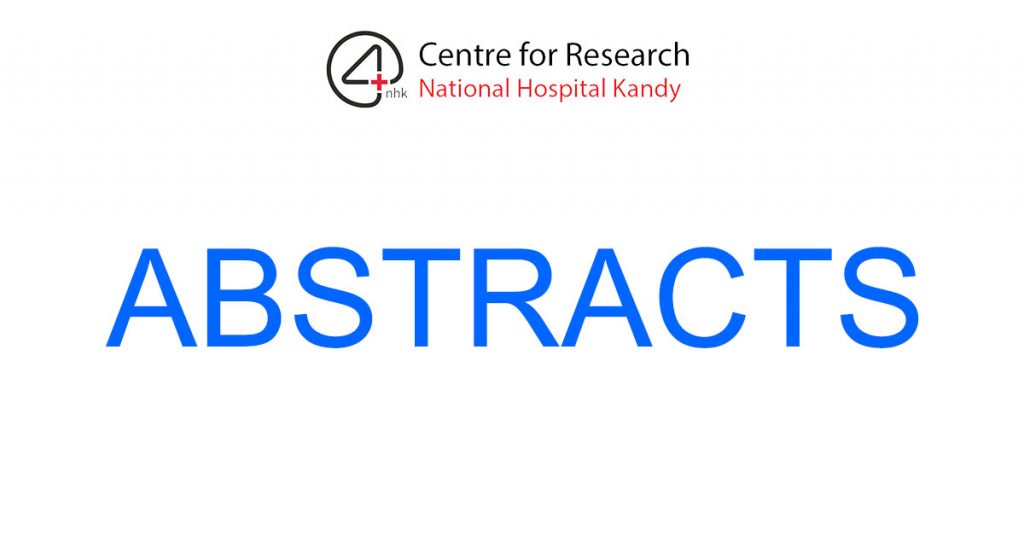The pattern of cytomegalovirus replication in post-renal transplant recipients with pre-emptive therapy strategy during the 1st year of post-transplantation.
Kalpa Dheerasekara 1, Rekshi Tharanga 1, Lakmali Rajamanthri 2, Abdul Wazil 3, Nishantha Nanayakkara 3, Rohitha Muthugala 2
1Department of Medical Laboratory Science, Faculty of Allied Health Sciences, University of Peradeniya, Sri Lanka.
2Department of Virology, National Hospital Kandy, Sri Lanka.
3Nephrology and Transplant Unit, National Hospital Kandy, Sri Lanka.
Abstract
Objectives: The prevalence and reactivating pattern of cytomegalovirus (CMV) among renal transplant recipients in Sri Lanka is scarce. The study was aimed to describe the replication patterns of CMV in post-renal transplant recipients who were on pre-emptive therapy and identify the risk factors and time period for CMV reactivating during the 1st year of transplantation and provide an insight into the selection of pre-emptive therapy in the local setting.
Methods: A retrospective and cohort study was conducted, enrolling renal transplant recipients who have completed routine 1-year follow-up for pre-emptive management at the National Hospital, Kandy, from January 2016 to January 2021. CMV quantitative polymerase chain reaction results and demographic data of enrolled recipients were analyzed to investigate the CMV replication pattern and risk factors. Categorical data were analyzed using Pearson’s Chi-square test, considering P < 0.05 statistically significant. Continuous variables were presented as percentages.
Results: Two hundred and fifty-one renal transplant recipients’ data were included in the study. Of them, 75.70% were male patients, and the mean age of the study population was 43.25 years. CMV DNAemia incidence was 56.57% during the 1st year of post-renal transplantation. Only 9.16% had developed more than 104 IU/mL or significant DNAemia. Sex and donor type were not risk factors for CMV reactivation. However, the recipient’s age was significantly associated with CMV viraemia among renal transplant recipients.
Conclusion: Considering the low incidence of significant viraemia among the study population, pre-emptive treatment would be the cost-effective strategy for management of the post-renal transplant recipients in local settings.
Keywords: Cytomegalovirus DNAemia; cytomegalovirus; pre-emptive therapy; renal transplant recipients; replication pattern.

